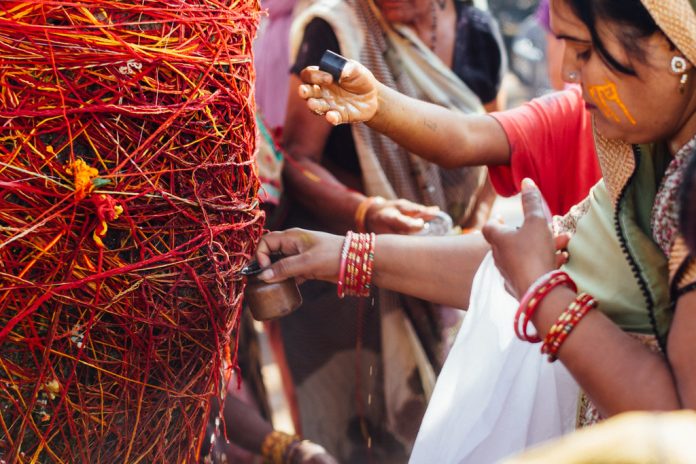While the United Nations encourages cities and metropolises to plant trees in order to curb global warming, this phenomenon has existed in Delhi for a very long time. The city is indeed, remarkable for its greenery. Besides its huge parks, the vast majority of its streets are lined with trees.
It is worth pointing out that in the city, which for several years has reached pollution records, trees are an invaluable resource. They eliminate pollution by absorbing carbon dioxide and dust. They are real air purifiers. Through photosynthesis, trees produce large amounts of oxygen. They also serve as air conditioners. During the hot season, they help to lower the temperature in the city thanks to their foliage which prevents the high heat from touching the bitumen too violently and being reflected.
The tree has always been man’s friend, it represents a vital resource. Do we not speak of the “tree of life” in many religions, mythologies, or even philosophies? It represents continuity and stability in evolution. It is also the symbol of wisdom. He is the protector and provider of nourishment. Indian beliefs are no exception.
Hinduism places great value on trees
It comes from ancient Vedic belief (roughly 1200 BCE). At that time nature was revered, rivers, mountains, and caves were goddesses, and trees were wells of life.
For the Hindus, trees have a conscience and are therefore sentient beings. They, therefore, respond to the rule of cycles of life, death, and rebirth: samsara.
According to the Puranas, trees are capable of knowing happiness and feeling sorrow.
It is also said that the trees are connected to each other by an energy that is totally unknown to us.
It is then easy to understand why all the trees are respected in Delhi and why there are still so many of them shading our streets.
However, this respect for the tree reaches a sometimes comical paroxysm, and what amuses us when we see it is quite natural for the Indians.
The hours spent in traffic jams leave us plenty of time to observe everything around us. And it is not uncommon to see in the streets, a tree in the middle of the road that forces us to change lanes. It sometimes happens that on the edge of the road, the white stripes go around the entire trunk of a tree.
But it doesn’t stop at roads. The enclosure walls of the parks and the low walls are built around the trees. Holes allow the branches to pass through. It is the same for the high barricades of construction sites: a hole is cut and the branches thread their way through it.
Sometimes temples are built around a tree, its highest branches can cross the ceiling.
But this is not surprising when we know that a deity dwells in each tree.
The most sacred tree: neem is inhabited by the goddess of medicine Dhanvantari, which is why the leaves are used for their virtues, in all forms (creams, powders, decoctions, etc.)

Some Hindu texts relate that Garuda, the mythical bird, and vehicle of Vishnu, would have spilled a few drops of the elixir of immortality on the earth as he flew to the heavens and a tree would have grown, born from this elixir.
The pipal, under one of which Siddharta experienced enlightenment and became Buddha, is reputed by the Hindus to be the earthly domicile of the god Vishnu. Icons or offerings are often found at its foot. He is venerated during every religious holiday or for a particular family event, births, weddings or simply to ask for the protection of the god.
It is in India, a custom that requires a young woman called mangalik to marry a tree before marrying her future husband. This was the case of the famous actress Aishwarya Rai before her marriage to Abishek Bachhan.
It is during the consultation with the astrologer, as before any important act of life, that the latter realizes the position of Mars in the sky of the future wife which hinders this union. Through the marriage certificate with the pipal, she asks for Vishnu’s approval and after a certain number of days, she can finally marry her suitor.
When marrying the tree, red threads are circled around the wrist of the young woman and the trunk of the pipal.
The phrase “gods are everywhere in India” makes sense now!
Even if you think you are alone or alone in the morning when you are jogging in a park and you come face to face with a tree planted in the middle of the running path, you will know that maybe Vishnu, maybe another divinity, watches over you and secretly encourages you.


























































